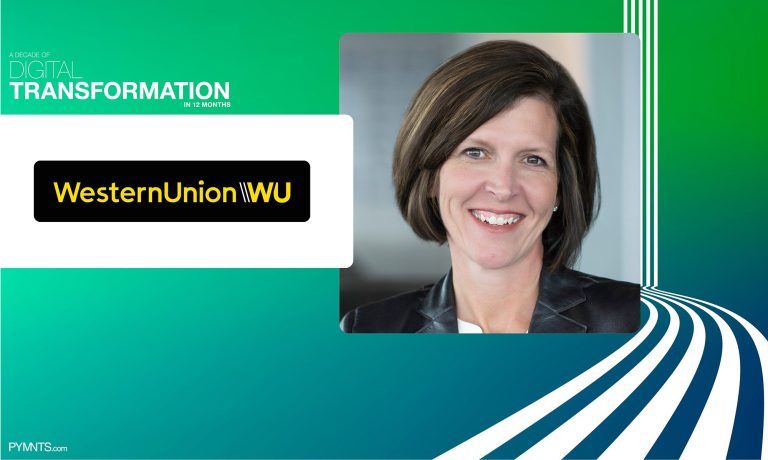
In A Decade of Digital Transformation in 12 Months, 46 C-suite executives spoke with PYMNTS for its Q2 eBook on what the world will look like as recovery rolls on and the next iteration of normal rolls out. In this excerpt, Shelly Swanback, president, product and platform of Western Union, explains why the fast-tracked digital shift has created an opportunity for businesses to redefine their customer relationships.
Read the entire eBook here.
The pandemic has shifted consumer habits across the globe for good. People were forced to break old habits and use digital options to engage in economic activity in a way we had not before. This was true across many areas of life — from how we worked to how we bought groceries — and consumer money transfers were no exception to this trend.
As lockdowns took effect, Western Union saw an explosion in its digital money transfer business as revenues for digital transfers soared 38 percent in 2020 compared to 2019. Although 2020 represented a breakthrough year for digital payments, in truth, it was an acceleration of a trend rather than a revolution – we had seen strong digital growth in our business for many years before the pandemic hit.
Although we had the infrastructure in place to capture the shift in demand to digital, the pandemic brought other challenges. We were all reminded of the need to innovate to enable our customers to continue to provide critical support for loved ones. For example, with approximately 80 percent of first-time WU.com customers net new to the company, we had to pivot to eKYC options, given that our new digital senders could not conduct face-to-face KYC. Discussions with global regulators were undertaken to implement both temporary and permanent eKYC solutions to meet the urgent needs of these customers. Our agility and use of robust IT and compliance systems were critical to our success.
The big question is how “sticky” the adoption of digital services in cross-border payments (and in the economy at large) will prove to be once life returns to normal. We believe that almost all of our customers who used digital options during the pandemic will continue to do so afterward. This is in part because the digital experience is extremely convenient and user-friendly, and provides a range of pay-in and pay-out options. Of course, large segments of our customer base live in remote and developing parts of the world, meaning that our vast retail network will remain crucial to them. As these areas of the world slowly improve smartphone and internet access, we expect a contemporaneous adoption of our digital services.
The accelerated adoption of digital provides the incredible potential to redefine our relationships with our customers. We have heard that they want more from their relationships with us beyond money transfer services. The global migrant population faces unique challenges, with unique demands in terms of financial services. We want to think more broadly about how we can address these demands – and so, later this year, we are going to market with an interest-bearing bank account for customers, with the ability to hold multiple currencies, starting in two European markets.
In short, as we look ahead to the post-pandemic world, we are moving beyond simply transferring value to providing an ecosystem in which our customers can access a marketplace of products and services designed to promote financial success and well-being.